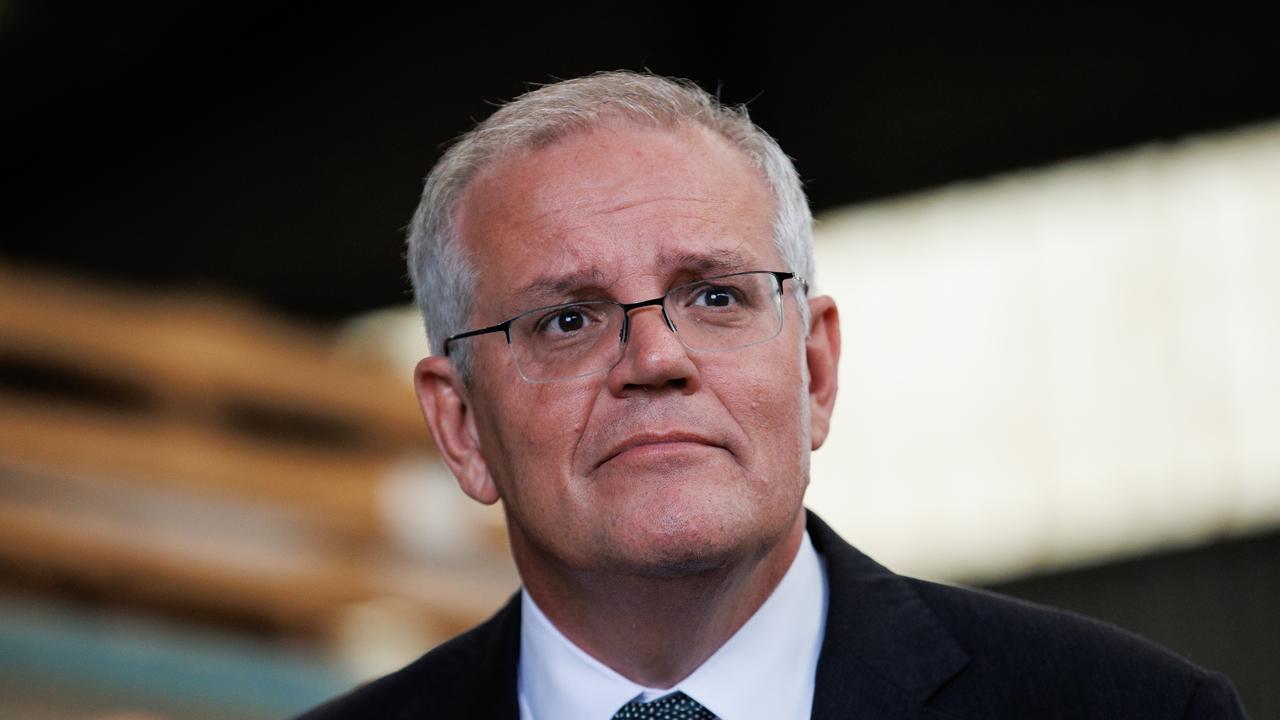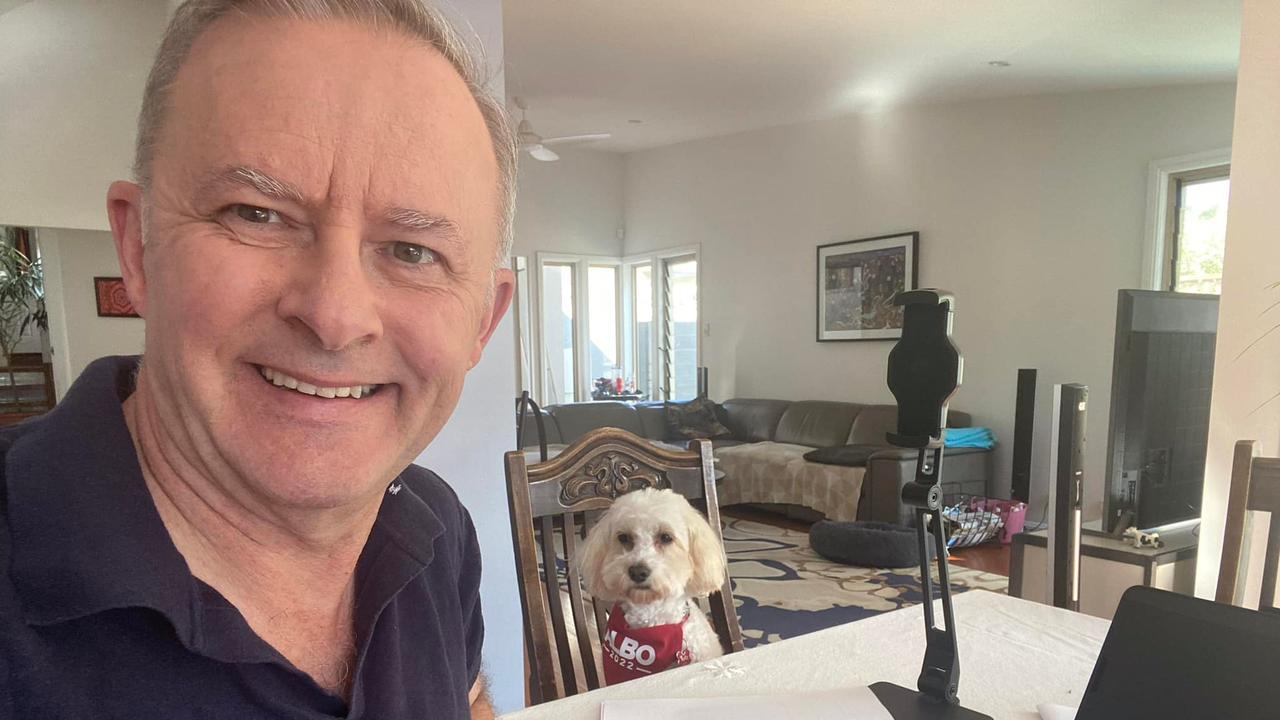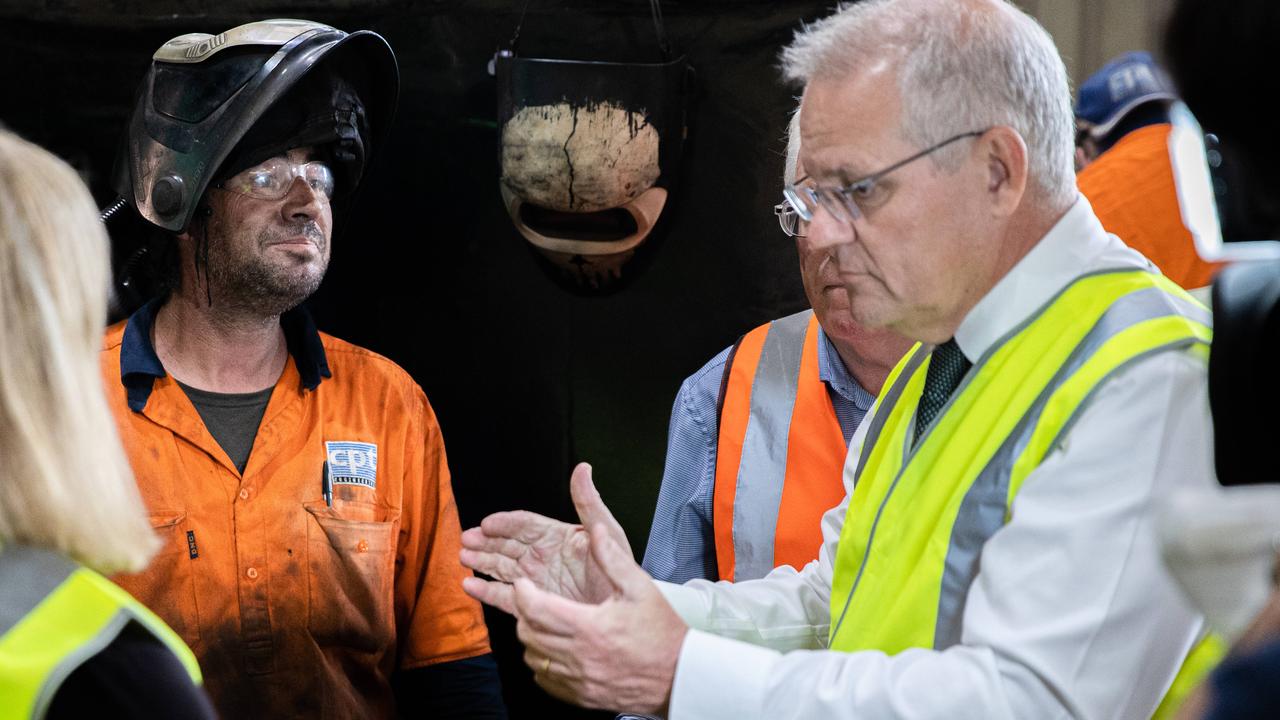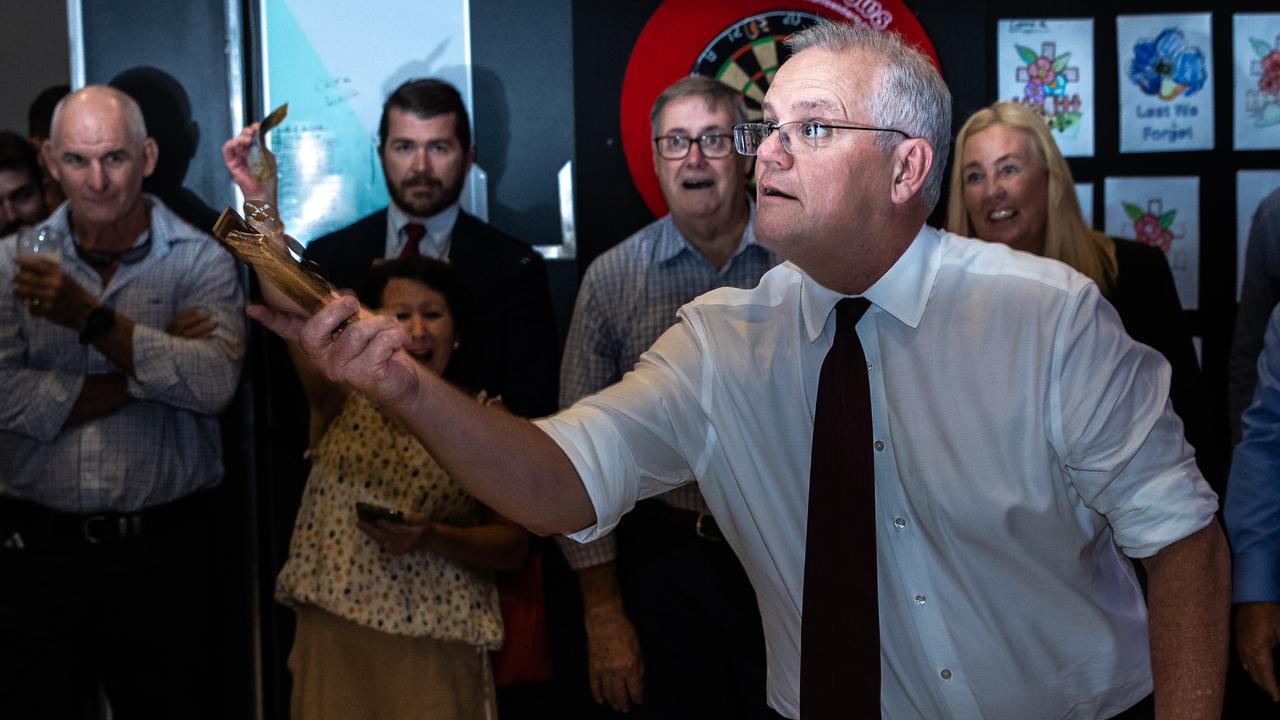How Scott Morrison wasted week of complete control during election campaign
With his opponent out sick, Scott Morrison enjoyed a week of unprecedented control as his campaign hit the halfway mark. But there was a big problem with his approach.
With his opponent out sick with Covid, Scott Morrison has enjoyed a week of unprecedented control as the election campaign hits the halfway mark.
What did he do with that week might you ask?
Well, he travelled all the way from Alice Springs and Darwin, to northern Queensland before jetting down to Tasmania.
There was also a lot of visits to factories and various other businesses, agreeable chats with employees and many funding and job creation promises.
But there was one thing that there wasn’t a lot of: risk.
When travelling with the Prime Minister this week, news.com.au observed that Mr Morrison‘s campaign consisted of a series of tightly controlled events and locations, with minimal opportunity for a chance interaction with an undecided or - even worse - a disgruntled voter.
It seemed that the Prime Minister had reached a turning point in his campaign last week when he braved the unknown and ventured out on a walk through the Royal Easter Show on Saturday.
But, with his opponent out of action for a week, there was no pressure for Mr Morrison to continue push forward with the risk taking.


Here is a brief run down of what the Prime Minister’s week entailed.
On Sunday, Mr Morrison flew to Alice Springs where he announced $14 million to address increasing rates of crime.
This stop was probably an indication of why his team has controlled his appearances so tightly, as the PM was met by a group of furious protesters who had to be physically stopped from entering the premises.
Undeterred, the protesters gathered at the side gate, screaming at the PM to “go home” as he spoke to locals.
This persisted throughout the entirety of the PM’s visit, with one woman interrupting his press conference by repeatedly screaming at Mr Morrison to “f**k off” through a megaphone.
That afternoon he jetted off to Darwin where he attended the Anzac Day Dawn Service the following morning and later visited Cazalys Palmerston Club to flip the first round of two-up.
This was probably one of the “riskier” events the Prime Minister attended this week, but even at this appearance most of the guests seemed to be aware of his visit and he was moved through the venue quite quickly before being ushered back into the car.
Then it was on to Townsville, where on Tuesday he visited a bakery and an engineering and steel factory, before heading to Rockhampton to buy some fruit and veggies at a local farmers market that had benefited from the Federal Government’s $150,000 instant asset write-off scheme.

It was then on to Cairns, where the PM visited a privately owned aviation maintenance company to highlight a $3 million grant received by the business.
Again, any company that has received or been promised millions in funding is likely to give Mr Morrison a very warm reception.
The rest of the week played out in a similar fashion, with the PM visiting a Hobart smelting factory that had been promised $50 million in funding and then on Friday heading to a distillery, yacht club and speedway.
Associate Professor of Narratology, Tom van Laer, told news.com.au that the safe, controlled way in which Mr Morrison’s campaign was playing out was likely a deliberate tactic informed by some negative past experiences.

Mr Morrison hasn’t had the best luck in the past with interactions with the general public.
For example, his infamous trip to the fire-ravaged town of Cobargo in 2020, where he was forced to abandon a meeting with locals after they began criticising and hurling insults, to the point where he was forced to retreat to his car.
Another video showed the PM awkwardly grabbing a firefighter’s hand after the man refused a hand shake, which earned Mr Morrison another round of fresh criticism.
Professor van Laer said it is experiences like these that have likely shaped the way the Prime Minister’s campaign is being run.
However, while this strategy might allow the PM to avoid some awkward interactions, it also points to major disconnect.
“The major Australian parties, and particularly the Liberal Party, seem stuck in ‘hey-want-a-cheap-watch mode’,” Professor van Laer said.
“Parties try to get people to their side, then worry about whether they really want to be there, or whether they will vote for them.”
He said this strategy is often ineffective and doesn’t allow for a productive and genuine conversation between a leader and potential voters.
“A conversation is, at a minimum, a two-way exchange of information — someone talks, someone else listens and responds,” he said.
“The first person hears the response and answers accordingly, and the second person does the same, and so on, until the conversation concludes.
“Marketing by the major parties is not a conversation. Information is delivered, but there is no observe-and-respond cycle.”
Professor van Laer said this is because parties don‘t have the ability to quickly adjust or change in response to their audience’s reaction to their initial message
“Consider the opposite: Candidates deliver a message. The audience responds. Candidates observe and adjust their message accordingly. A conversation occurs,” he said.
“Even on the internet this level of two-way conversation can occur in a polite, empirically measurable way.”
Now at the halfway mark in the campaign, Mr Morrison has a choice to make: Does he continue to play it safe and hope it is enough to get him over the line, or does he take more risks and hope they pay off?






